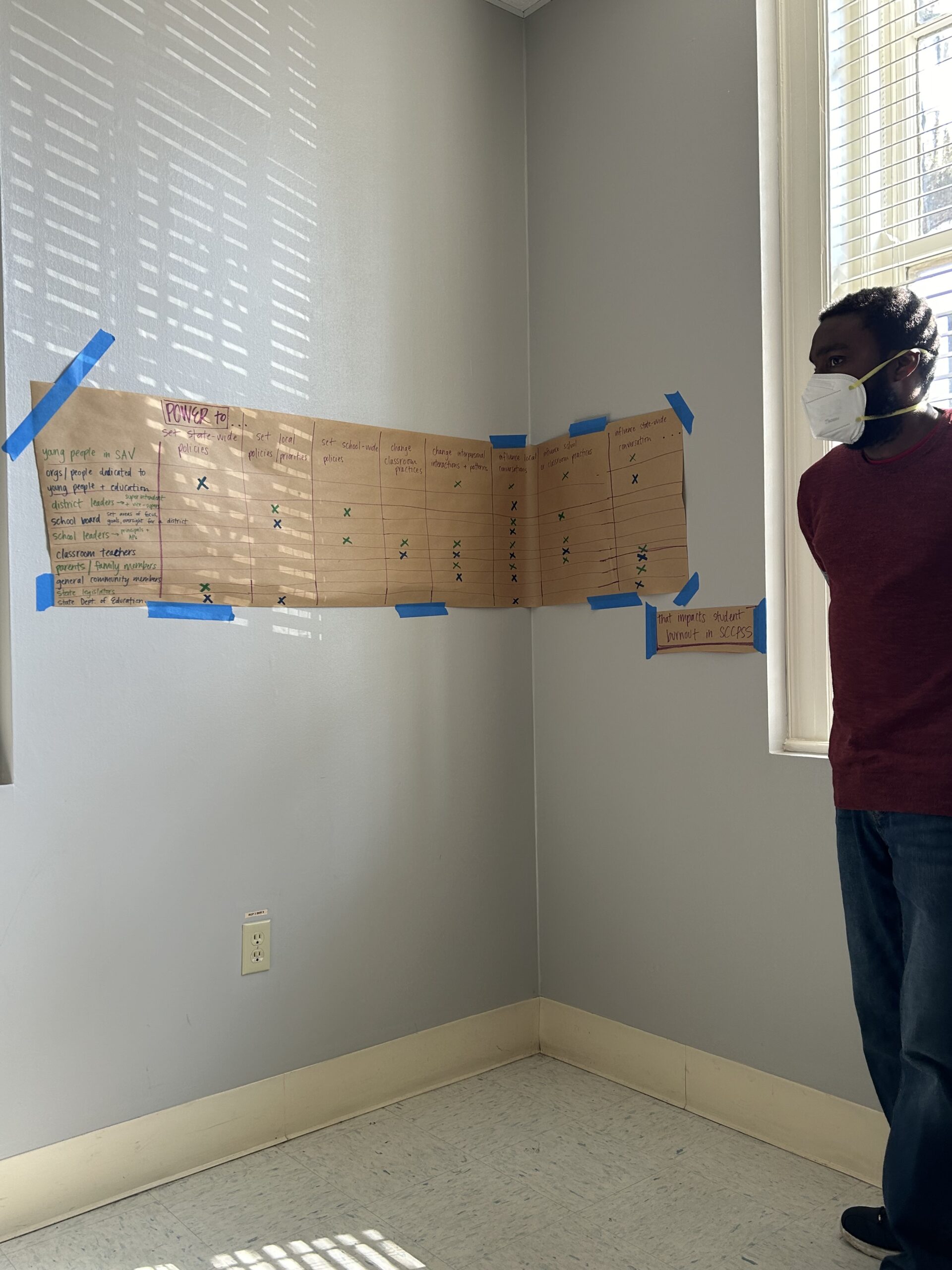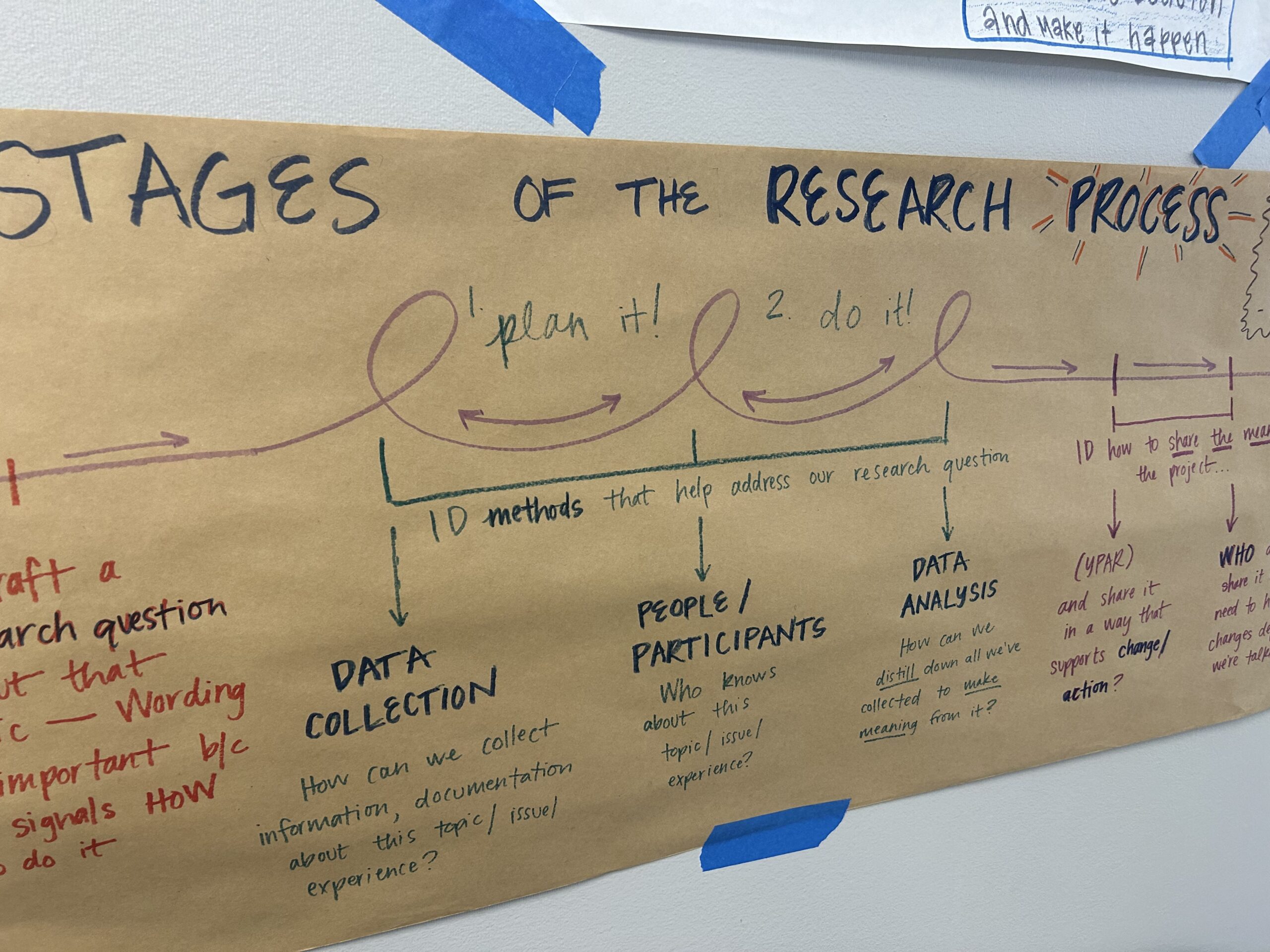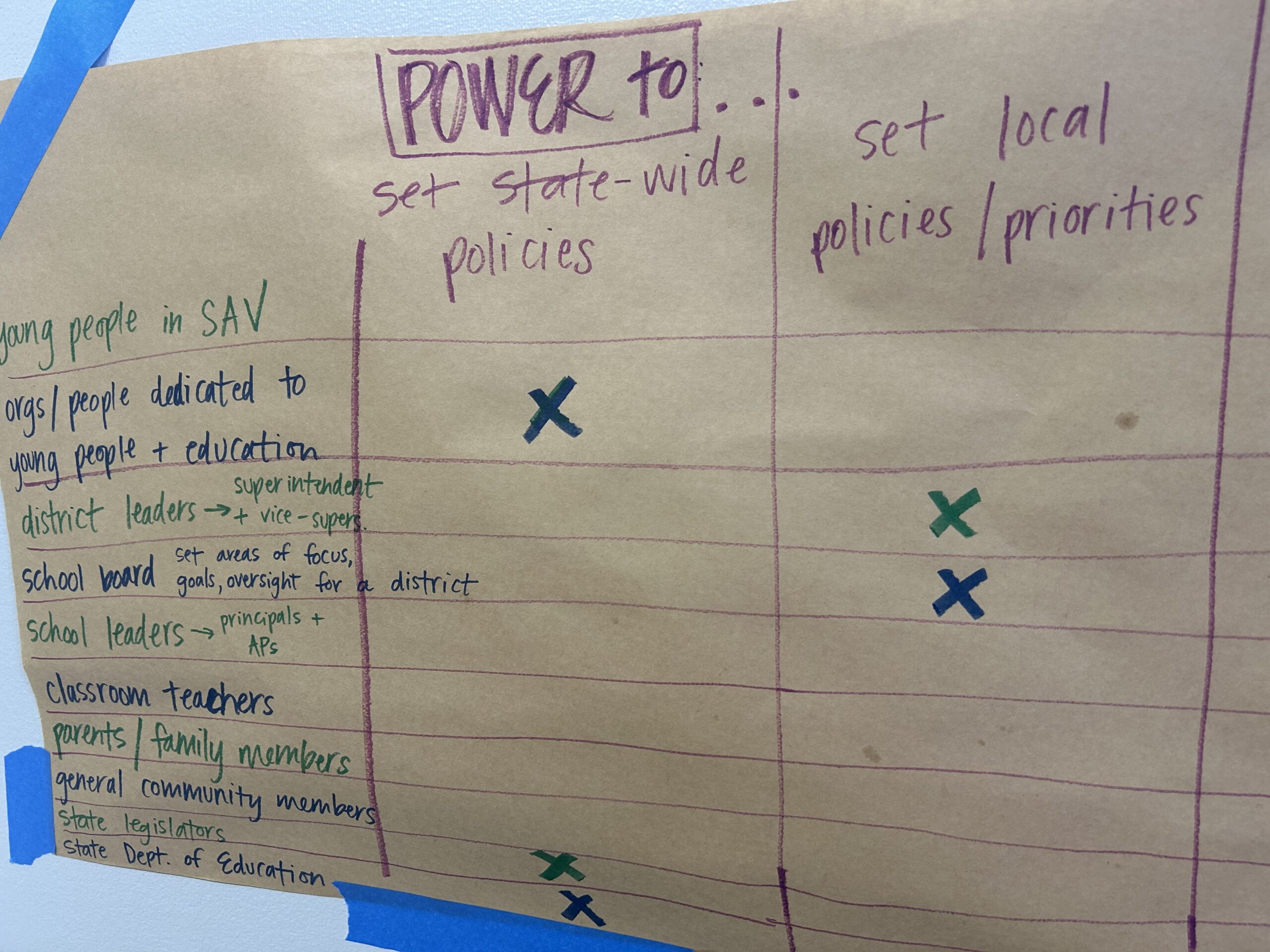It’s easy in these times to feel…powerless. Like decisions are being made for you, not by you, and those decisions don’t seem to benefit most people. It’s a common form of disempowerment we run into at Deep, especially experienced by our young people in settings where they don’t feel their voices and perspectives are truly valued. But that feeling of disempowerment? It’s by design — and our Action Research Team is showing that it simply isn’t always the case.
 “We wanted a better way to show ART the structure of power of not only themselves, but other stakeholders within the community as it relates to education” says program manager Keyshawn Housey. “That’s why we decided to start power mapping.”
“We wanted a better way to show ART the structure of power of not only themselves, but other stakeholders within the community as it relates to education” says program manager Keyshawn Housey. “That’s why we decided to start power mapping.”
- Consider all players of relevance and identify key players to target for messaging and action
- Provide an analysis and visual representation of where power relationships stand in relation to the issue and how people could intervene
- Identify relationships between key players and assess relevance to the strategy
- Identify further information (‘research questions’) needed to further develop the power map and inform you campaign strategy
The word “power” often comes with a negative connotation – it’s often closely connected with “power over” aka, corruption, abuse, punching down. Yet, power is necessary- and it’s not inherently bad, much like it’s not inherently all good; it’s a tool that is used to influence others’ behavior and effect change within an organization. It’s recognizing the how and why we are using it. Because when power is attainable for everyone and not just limited to those with the most resources and authority, employees can feel more agency in their work and invested in their well-being.
“We wanted the team members to have the information about who their target audience is – who they wanted to reach to share their findings with and not everyone is pushing to make an ask for a change, some people just want to raise awareness.” says Associate Director of Transformative Culture, Megan Ave’Lallemant “What we found in years past, without having a target audience defined, it was difficult to have them craft their messages with those folks In mind so that it was clear. We needed to figure out who has the power to do what.”
Director of Restorative Culture and Practices, Mel Kutner, built the power mapping tool based off the asks of ART and then used by ART. Most importantly, they were intentional about including people who aren’t typically thought of as having “hard power.” This includes students, family members, general concerned community and organizations – people and places that don’t directly make the laws or policies, but can use their power to influence laws and policies in a certain direction.
“Each cell is a differentiated strategy of how we make the message for this audience based off what we have control over” said Mel. “Once we identified that, we then craft a message with those stakeholders in mind and then bridge our work to them. The intention was to show this thing you are dreaming of happening, who has the power to make it happen and needs to hear from you.”
It’s a first step towards recognizing the different forms of power that exist and in fact, that we are not powerless – and we can’t wait to see what ART’s next steps are with the recognition of their power.

